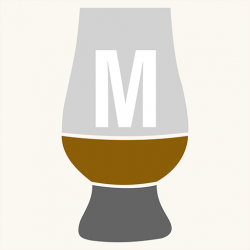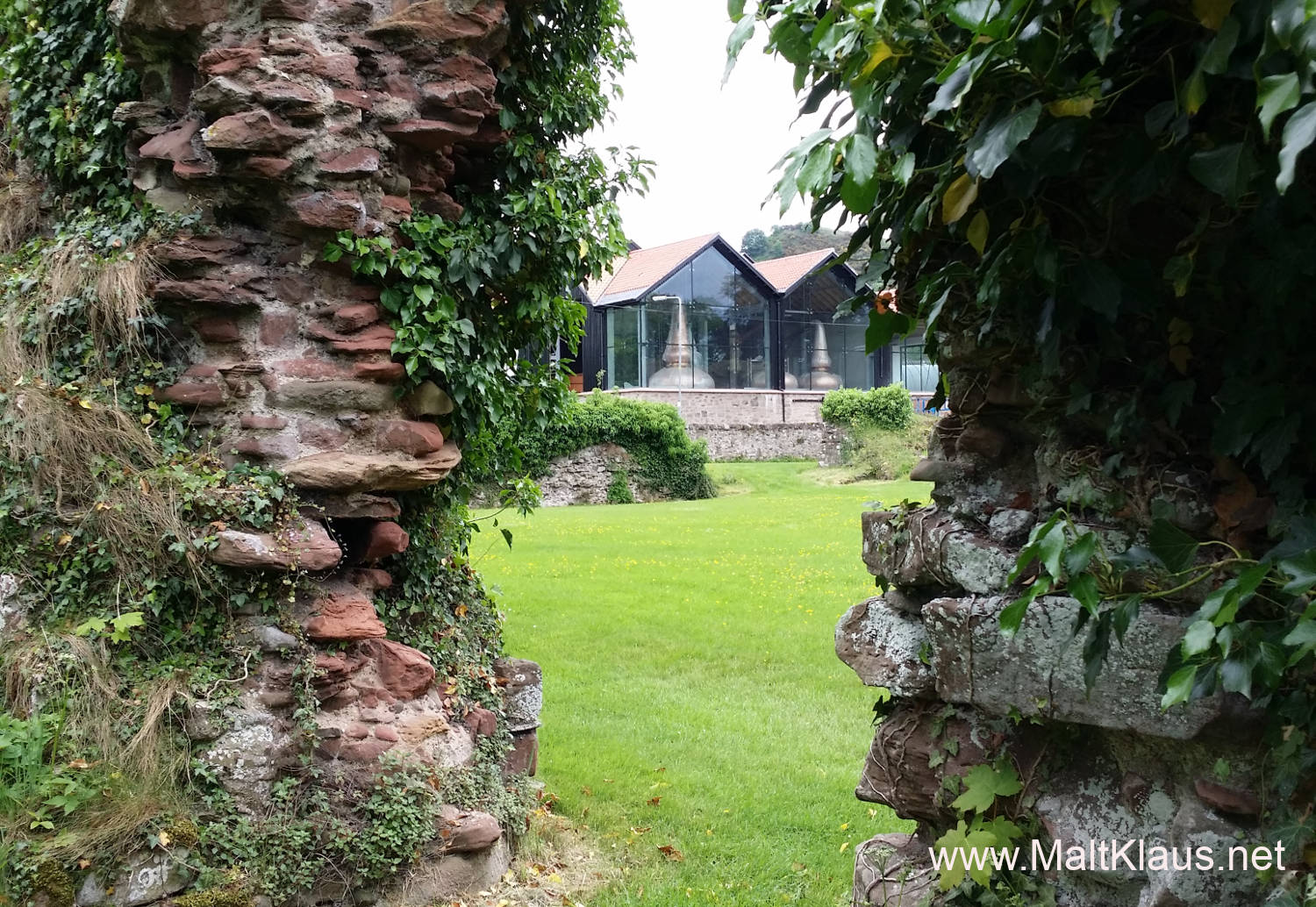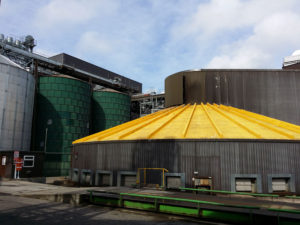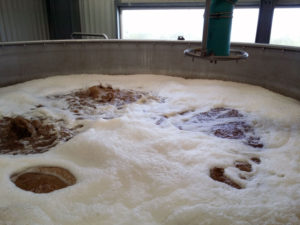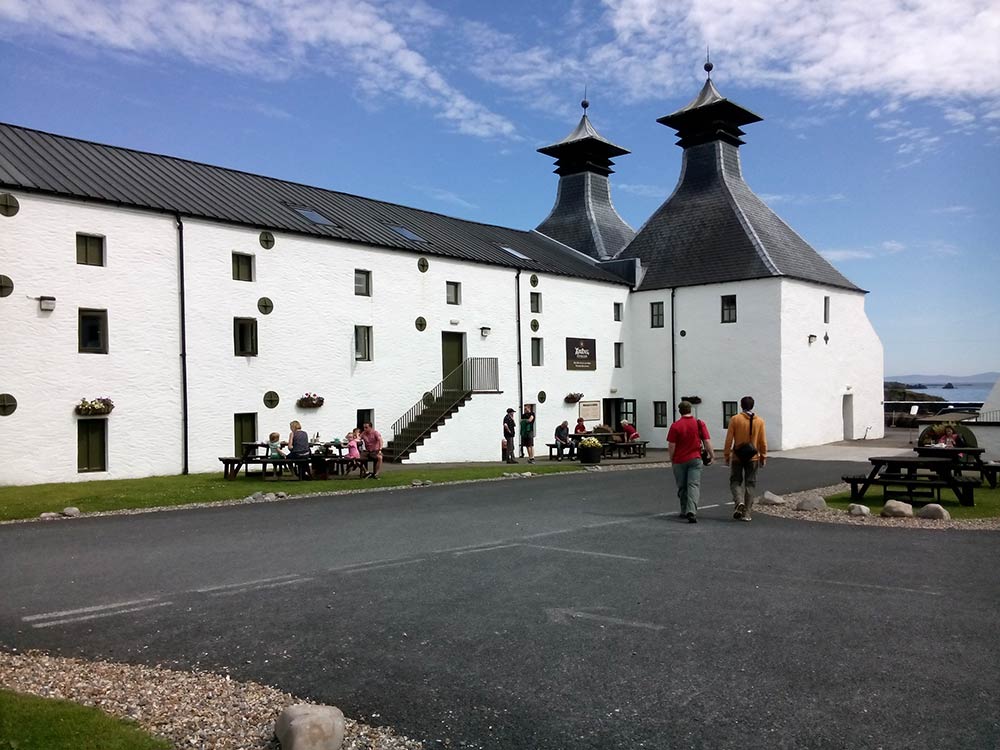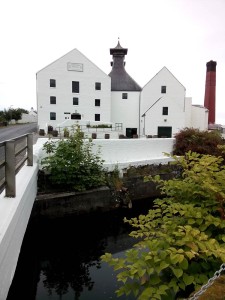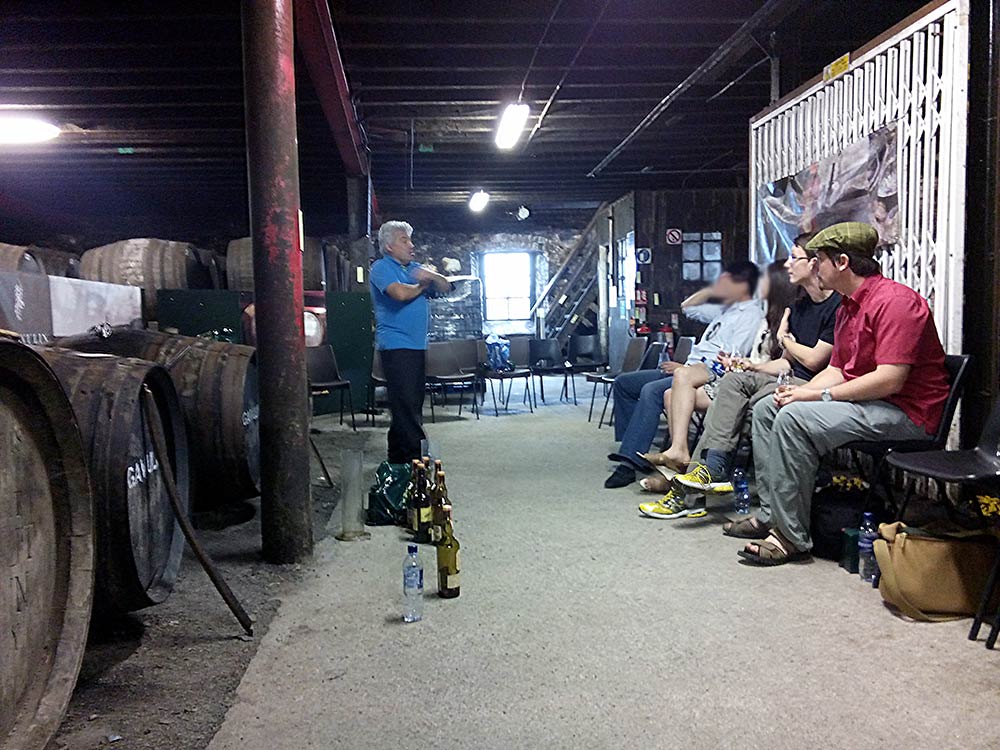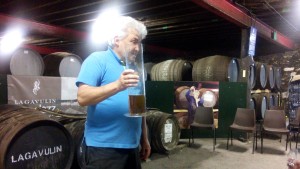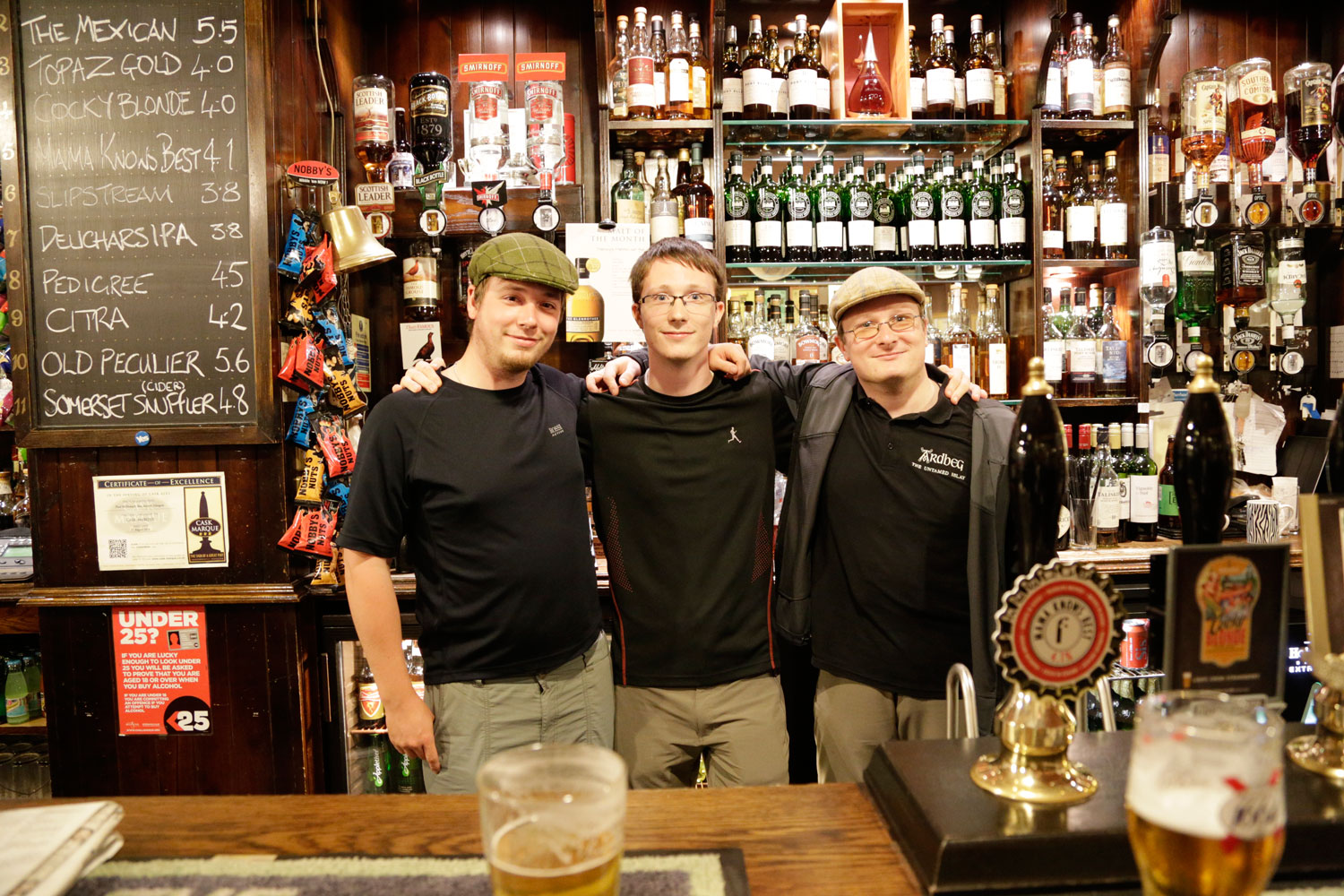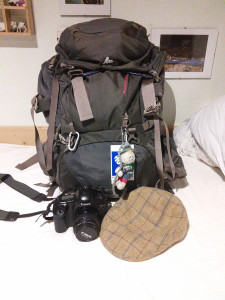Just a few years ago, when I first travelled to Scotland, Fife was pretty much non-existent on modern whisky maps, even the rogue farm distillery at Daftmill was only known to a handful of geeks. These days it could count as a whisky region of its own, with quite a few new distilleries starting up. Amongst them is the first stop of the day for Jo and myself – Lindores Abbey.
Sit back, pour yourself a dram and join us on the journey!
Lindores Abbey
Et per liberacionem factam fratri Johanni Cor per preceptum compotorum rotulatoris, ut asserit, de mandato domini regis ad faciendum aquavite infra hoc compotum, viii bolle brasii.
“To Friar John Cor, 8 bolls of malt, wherewith to make aqua vitae for the King.”
The date was 1st of June, 1494, and this phrase is to be found on a piece of parchment, an Exchequer Roll. It marks the first recorded history of distillation of “aqua vitae” in Scotland, the “water of life”, the unaged equivalent of what we call “new make” today before it goes into casks.
523 years later, to the day, Jo and I are given a very warm welcome by Drew McKenzie Smith, Managing Director and Gary, distillery manager, at the gates of the former Lindores Abbey on Lindores Farm, in the possession of Drew’s family for over 100 years. Distillation is about to be resumed at the time of writing (August 2017), at what they call the “spiritual home of Scotch Whisky”. Now, we’ve seen a lot of new distillery projects these past few years and everybody tries to find a unique story, a unique selling point, some so far-fetched it’s borderline comical, but the same can not be said about this place. Actually, the project has been (on and off) in the making for many years, way before the current distillery boom had started.
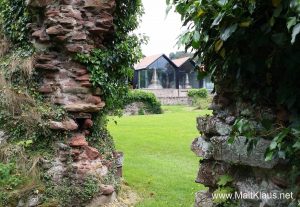
The new distillery is being built across the road from the abbey’s remains, where formerly farm buildings – built from Abbey stone – stood. It might not be visible anymore today, but digs carried out when constructing the distillery, revealed the ground where the distillery now stands once was part of the abbey itself, which was founded in 1191 by Benedictine monks from the Order of Tiron. The monks were known for medicinal skills and horticulture and the abbey grounds once were home to an impressive orchard – about 3000 fruit trees can still be found in town, originating from the Abbey’s orchards. Now, why is this important? Every new distillery project needs an income stream before they can sell whisky after a minimum waiting time of three years and a day. Many sell products like gin, vodka or young whisky, or even new make. Drew’s vision for Lindores is slightly different and a clever integration of the site’s heritage: He plans to sell aqua vitae, which once was new make improved with all sorts of herbs (and honey). The visitor’s centre will feature an apothecary where visitors will be able to create their own version of it, with Lindores new make and selected (some even locally grown) herbs. They also plan on selling a commercial aqua vitae. Depending on how their own spirit matures and how well sales of the spirit product are, the first whisky release is planned to occur at about 5 years of age. The sale of aqua vitae is not the only homage to the distillery’s past, there will be a refactorium, used as a dining area, with huge, rustic oak banquet tables, for instance, and more details for visitors to explore during a visit. Continue reading “2017 Whisky adventures part 6: Fife – Lindores Abbey, Eden Mill, Artisan and more!”

